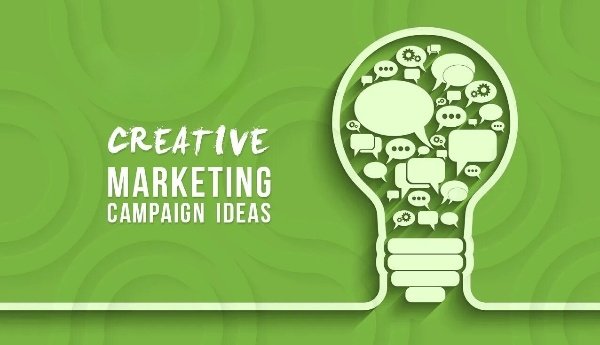Traditional Marketing Strategies
Understanding the landscape of traditional marketing strategies is essential for any marketing executive. This segment will focus on two key methods: utilizing TV ads and leveraging direct mail, which are vital for establishing brand presence and driving customer engagement.
Utilizing TV Ads
Television advertising remains a powerful media format despite the proliferation of digital platforms. The average return on investment (ROI) for TV ads is impressive, ranging from 300 to 500 percent, making it an attractive option for firms with substantial budgets. While smaller businesses might find such investments challenging, large organizations often rely on TV ads to build brand recognition and launch new products effectively. Broadcasting channels reach vast audiences, promoting awareness and creating a long-term impact (Salespanel).
| Medium | Average ROI (%) | Audience Reach | Cost |
|---|---|---|---|
| TV Ads | 300 – 500 | Massive | High |
| Radio Ads | Moderate | Local to National | Moderate |
Investments in this medium should be strategic and targeted based on your market research and audience behaviors.
Leveraging Direct Mail
Direct mail is an enduring traditional marketing method with notable effectiveness. It allows businesses to reach customers with personalized offers tailored to their preferences. Research indicates that consumers are likelier to take action on items received through direct mail when they are close to making purchases. Millennials, in particular, demonstrate a higher likelihood of engaging with direct mail compared to other demographic groups (Salespanel).
| Advantage | Direct Mail Benefits |
|---|---|
| Higher Engagement | Customers are more likely to act on received items. |
| Targeted Marketing | Customizable based on demographics. |
| Tangible Experience | Physical items can create a lasting impression. |
Incorporating direct mail strategies into your marketing plan can be a cost-effective way to enhance customer relationships and drive sales. Explore the various traditional marketing techniques to better understand how to integrate these strategies into your overall business approach effectively.
Effective Billboard Marketing
Importance of Broadcasting
Broadcasting remains a cornerstone of traditional marketing strategies. Advertising through television and radio reaches a vast audience, playing an essential role in brand awareness. Despite the emergence of streaming platforms like Netflix, broadcasting continues to command significant attention due to its inherent effectiveness in promoting brand recognition. This approach serves to establish trust with consumers, as campaigns utilizing traditional marketing mediums—such as print ads, billboards, and television commercials—tend to be less susceptible to ad blockers.
Billboards represent a powerful form of outdoor advertising, offering a unique opportunity for businesses to create brand awareness on a national scale. Focusing on long-term recognition rather than immediate sales, billboards work effectively to enhance visibility and remind potential customers of your brand over time (Salespanel).
| Medium | Audience Reach | Cost | Accessibility |
|---|---|---|---|
| TV Ads | Very High | High | High |
| Radio Ads | High | Moderate | Moderate |
| Billboards | High | Variable | High |
For further insight into the power of traditional marketing, explore our resources on traditional marketing channels and traditional marketing statistics.
Historical Evolution of Traditional Marketing
Understanding the historical context of traditional marketing enhances its significance in today’s business landscape. The evolution can be traced through various marketing eras, starting from the Industrial Revolution (1860s-1920s). During this period, mass production enabled businesses to reach wider audiences, creating an increasing demand for goods. Companies relied on newly available technologies to produce affordable products.
In the subsequent Sales Era (1920s-1940s), businesses began implementing eye-catching sales promotions, radio commercials, and door-to-door sales techniques. One prominent example is Proctor and Gamble, which effectively utilized radio broadcasts during the Great Depression to attract consumers (CoSchedule).
Traditional marketing methods have demonstrated adaptability and resilience throughout their evolution. They remain relevant in today’s digital age, with marketers increasingly integrating traditional approaches into their strategies. For examples and case studies on this, visit our article on traditional marketing case studies and further learn about traditional marketing methods.
Transition to Modern Marketing
As businesses evolve, it is crucial to adapt marketing strategies to engage effectively with customers. The transition from traditional marketing methods to modern tactics highlights two significant trends: the role of storytelling and the rise of inbound marketing.
The Role of Storytelling
Storytelling has become a pivotal component in marketing. Brands like Disney have long utilized storytelling as a foundational strategy since 1923, turning narratives into powerful tools for branding, merchandising, and advertising. This consistent use of storytelling has not only established Disney’s identity but has also transformed its products into global phenomena (CoSchedule). By weaving engaging narratives, companies can resonate emotionally with consumers, fostering a deeper connection that encourages loyalty and trust.
Incorporating storytelling into your marketing strategy can enhance engagement and differentiate your brand in a crowded marketplace. A well-crafted story can make your products memorable and encourage consumers to share their experiences, amplifying your reach. This approach is essential for creating a brand voice that speaks to the target audience’s needs and desires, bridging the gap between traditional marketing methods and modern consumer expectations.
Rise of Inbound Marketing
The rise of inbound marketing represents a significant shift in how businesses connect with potential customers. This approach emphasizes attracting customers through relevant and valuable content rather than intrusive advertising. As consumers increasingly prefer making informed decisions based on research, inbound marketing techniques such as infographics, blog articles, videos, and podcasts have gained traction (CoSchedule).
Inbound marketing not only enhances the customer experience but has also shown a considerable return on investment potential. By delivering personalized content that meets consumer needs, businesses can cultivate relationships that lead to higher conversion rates. Transitioning to inbound marketing requires an understanding of consumer behavior and the ability to create compelling content that addresses pain points, desires, and aspirations.
To effectively leverage inbound marketing, it is important to create a robust strategy that encompasses various channels and focuses on providing value to your audience. This shift from traditional push marketing to a pull approach aligns with the contemporary emphasis on building relationships and trust with customers, ultimately leading to sustainable growth and loyalty.
As the marketing landscape continues to change, businesses must embrace these modern approaches while still appreciating the foundational principles of traditional marketing research methods. Balancing both strategies can lead to a comprehensive marketing framework that caters to evolving consumer preferences.
Traditional vs. Digital Marketing
Impact of New Media
The emergence of new media has revolutionized marketing strategies. Traditional marketing methods, including print ads, billboards, and TV commercials, have adapted to the growing digital landscape. While traditional channels still offer broad reach and foster trust among audiences, the precision and targeting capabilities of digital media provide a significant advantage. Digital platforms facilitate audience segmentation based on factors such as age, location, interests, and industry, allowing for more tailored marketing efforts.
In contrast to traditional marketing’s broad strokes, digital media enables marketers to build authentic relationships and engage niche audiences effectively. The transition from impersonal marketing techniques to more personalized approaches reflects the evolving preferences of consumers who now expect relevant content. With the increase in Internet usage and the prevalence of social media, digital research methods have gained traction, providing businesses with direct consumer insights and innovative tools for capturing feedback.
| Marketing Approach | Traditional Marketing | Digital Marketing |
|---|---|---|
| Audience Targeting | Broad reach | Precise segmentation |
| Consumer Engagement | Limited interaction | Direct and dynamic interaction |
| Adaptability | Rigid processes | Quick adjustments to campaigns |
| Measurement | Harder to quantify | Comprehensive analytics available |
Comparing Cost Effectiveness
When assessing the cost-effectiveness of traditional versus digital marketing, it is essential to consider various factors. Digital marketing often appears more economical due to lower startup costs and the potential for more significant returns on investment. Traditional marketing, while impactful, can require substantial investments with less overall flexibility.
Research indicates that inbound marketing—part of the digital strategy focusing on creating helpful content—generates high returns for businesses, often exceeding those of traditional marketing campaigns (CoSchedule). This shift to content-driven engagement allows businesses to allocate budgets more effectively, targeting specific consumer segments without the exorbitant costs associated with widespread traditional advertising.
| Cost Factors | Traditional Marketing | Digital Marketing |
|---|---|---|
| Campaign Costs | Generally high | Often lower |
| Measurement & Analytics | Difficult to track ROI | Clear analytics and KPIs |
| Flexibility | Limited | High flexibility in budget adjustments |
| Long-Term Value | Longer campaigns | Short-term adjustments with longer-lasting relationships |
In conclusion, as you navigate your marketing strategies, recognizing the unique advantages of both traditional and digital methods is crucial. Balancing these approaches can enhance your marketing efforts, allowing you to leverage the strengths of each strategy effectively. For more insights on effective marketing methodologies, explore our detailed sections on traditional marketing methods and integrating traditional and digital marketing.
The Marketing Evolution
Shift to Relationship Marketing
The marketing landscape has evolved significantly over the decades, notably shifting towards relationship marketing. Beginning in the 1990s, this approach emphasized the importance of building long-term relationships with customers. Companies focused on enhancing customer retention, loyalty, and ongoing interactions with their brands. This focus on maintaining and nurturing customer relationships marked a departure from traditional transactional marketing methods. By prioritizing customer experience and satisfaction, businesses aimed to create lasting emotional connections with their audience. Emotional engagement has traditionally played a crucial role in achieving this through marketing methods such as TV commercials and print ads.
| Year | Marketing Focus |
|---|---|
| 1990s | Relationship Marketing |
| 2000s | Digital Marketing Growth |
| 2026 | Projected Global Digital Ad Market: $876.10 billion (LinkedIn) |
Digital Dominance in Marketing
By the early 2000s, digital marketing began to gain traction, transforming how businesses approached their marketing strategies. More than half of marketing efforts (55%) transitioned to digital platforms, reflecting a significant shift in consumer behavior and preferences. The global digital advertising market’s rapid growth has since projected to reach astonishing figures, indicating the increasing reliance on digital channels for engaging customers and promoting products. While digital marketing offers extensive outreach and targeting capabilities, it lacks some of the personal touches that traditional marketing channels can provide, such as face-to-face interactions and tactile experiences.
While the rise of digital marketing is undeniable, integrating both digital and traditional marketing channels is now considered the most effective strategy for reaching diverse audiences. This integration allows companies to leverage tools and platforms for impactful campaigns, such as using social media for product buzz while incorporating traditional media for broader audience reach.
For more information on how traditional methods compare with digital tactics, explore our section on traditional vs digital marketing. Emphasizing a well-rounded strategy can enhance brand presence and effectiveness in any marketing campaign.
Digital Research Methods
Digital research methods have transformed the landscape of market research, offering unique advantages and presenting distinct challenges. Understanding these aspects is crucial for making informed decisions about your marketing strategies.
Advantages Over Traditional
Digital research methods have experienced significant growth due to the rise of internet usage, improved broadband speeds, and the proliferation of social media platforms. These changes provide you with more direct avenues for consumer research and innovative digital functionalities. Key advantages include:
- Wider Reach: Digital platforms enable access to a larger audience, facilitating broader research efforts.
- Cost-Effectiveness: While traditional methods entail various costs associated with moderation and analysis, digital research can offer savings in respondent recruitment and incentives. However, remember that costs may increase for online discussions due to setup and analysis requirements.
- Anonymous Responses: Digital methods enable respondents to provide feedback more candidly and without fear of judgment.
- Multimedia Capabilities: Tools like video filming and messaging allow richer data collection and engagement with customers, leading to more effective idea development.
The following table summarizes the advantages of digital over traditional research:
| Advantage | Digital Research | Traditional Research |
|---|---|---|
| Reach | Extensive | Limited |
| Cost | Generally lower | Higher |
| Response Anonymity | Yes | No |
| Multimedia Interaction | Yes | No |
Challenges and Limitations
Despite the benefits, digital research methods also have notable challenges that you must consider:
- Complex Moderation: Online moderation can be more difficult than in-person methods. The digital format can lead to a linear and mechanical process that limits exploration of deeper insights (The Market Researchers).
- Visual Limitations: Virtual interactions can restrict your ability to gauge non-verbal cues, which are crucial in understanding participant reactions. Small screen views may hinder comprehensive understanding of contextual responses.
- Varied Effectiveness: The quality of qualitative responses can differ significantly, requiring varying levels of probing and interpretation. Digital formats may produce superficial feedback that lacks depth (The Market Researchers).
- Setup Times and Assistance: Digital research often necessitates additional time for respondent support and technical setup, potentially increasing costs compared to traditional approaches.
To find more insights on the contrasting approaches in marketing strategies, refer to our article on traditional vs digital marketing. Understanding these advantages and challenges will help you make informed decisions on your marketing research methods and approaches.
Balancing Marketing Strategies
Importance of Audience Insight
Understanding your audience is paramount in crafting effective marketing strategies. Audience insight allows you to tailor your approach to meet the needs and preferences of your target demographic. Traditional marketing retains its unique advantages, particularly in the B2C sector, where campaigns such as print ads, billboards, and TV commercials continue to resonate with consumers, garnering trust and engagement (Salespanel).
To successfully connect with your target audience, consider the following factors:
| Factor | Description |
|---|---|
| Demographic Preferences | Tailor content to suit age, gender, and interests. |
| Cultural Context | Align messaging with cultural values and practices. |
| Consumption Habits | Understand how and where your audience prefers to receive information. |
In particular, traditional marketing tools like television and radio advertising can be particularly effective for older audiences, many of whom may prefer these familiar formats over digital alternatives (WVU Marketing Communications Today).
Leveraging Traditional Marketing Tools
Utilizing traditional marketing tools remains vital for certain demographics and circumstances. Despite the rise of digital platforms, methods such as print media, television, and outdoor advertising still hold significant value, especially in areas with limited internet access. Such strategies ensure that you reach audiences who may not engage with digital content effectively (WVU Marketing Communications Today).
The emotional connections often encapsulated in traditional marketing tactics, such as nostalgic TV commercials or impactful print advertisements, can create a strong audience engagement that digital methods sometimes lack.
To effectively leverage traditional marketing tools, consider the following recommendations:
Utilize Targeted Campaigns: Focus on specific demographics by using localized print ads or radio spots to engage with your community.
Integrate with Digital Platforms: Combine traditional strategies with digital campaigns to enhance reach. For instance, use social media to promote TV commercials, creating a synergy between both methods (WVU Marketing Communications Today).
Analyze Performance: Regularly assess the effectiveness of your traditional marketing initiatives by tracking engagement metrics and audience response.
By balancing insights from your audience with effective use of traditional marketing tools, your company can create a comprehensive strategy that maximizes reach and resonance with your target market. For further exploration on traditional marketing methods, consider reviewing other aspects such as traditional marketing strategies and traditional marketing tools.
Hybrid Market Research
In the landscape of marketing research, blending traditional and digital methods can offer unique advantages. Hybrid market research leverages both approaches to provide rich insights, ensuring that you gather comprehensive data while optimizing resources.
AI Integration
Artificial Intelligence (AI) plays a pivotal role in enhancing hybrid marketing research. Through predictive analytics and machine learning, AI can analyze large datasets efficiently, revealing patterns and trends that might not be immediately visible. This capability allows for a more nuanced understanding of consumer behavior. By applying AI, you can automate routine tasks, such as data collection and analysis, freeing up valuable time for your team to focus on strategic planning.
AI also aids in improving the respondent experience. For example, AI-driven platforms can facilitate personalized surveys that adjust questions based on previous responses. This level of customization leads to richer, more meaningful insights. Moreover, the integration of AI tools can enhance audience segmentation, targeting your research efforts more effectively integrating traditional and digital marketing.
Unified Data Analysis
One of the key benefits of hybrid market research is the ability to conduct unified data analysis. This means that data collected through various traditional methods, such as face-to-face interviews or focus groups, can be analyzed alongside digital responses obtained through online surveys or social media insights. By doing so, you can gain a holistic view of your target audience.
However, be aware of the challenges associated with this approach. Traditional research methods offer precision, reliability, and personal engagement, but they often come with higher costs and longer timelines due to logistics such as travel and recruitment The Market Researchers. Conversely, while digital methods are more accessible and faster, they may present data quality issues, ethical concerns, and difficulties in moderating discussions effectively LinkedIn.
To better illustrate the differences in costs and required resources between traditional and digital research methods, here is a comparison table:
| Research Method | Cost Considerations | Advantages | Challenges |
|---|---|---|---|
| Traditional | Recruitment, travel, incentives | Precision, reliability | Higher costs, longer timeframes |
| Digital | Setup, moderation, analysis | Low cost, wide audience access | Data quality issues, ethical concerns |
Integrating both traditional marketing research methods and digital insights creates a powerful synergy that can lead to more informed decisions and strategic marketing initiatives. This approach not only maximizes the strengths of each method but also addresses their limitations, ensuring you gather qualitative insights that are both accurate and actionable.





















